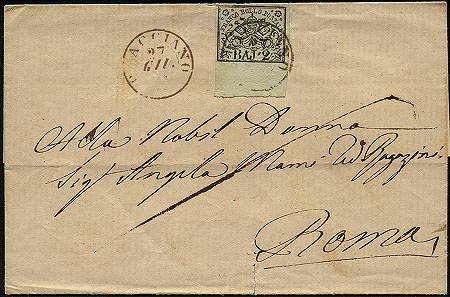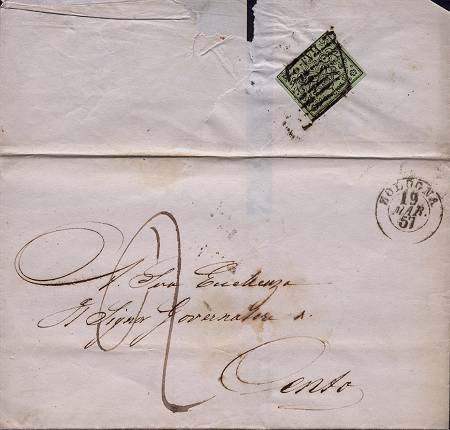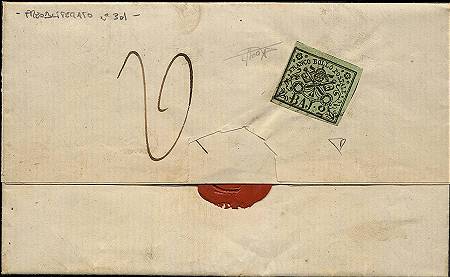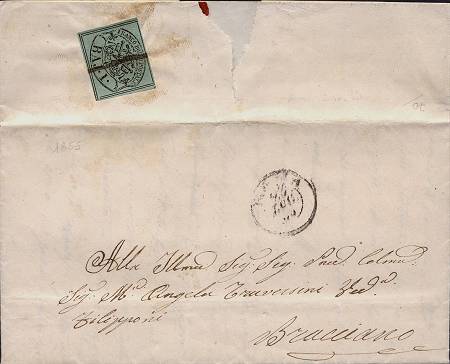
Fig. 1: letter with stamp applied by the sender: please note the diagonal sign of validation
Front
and back (sides)...
Somebody may like to joke about this "Going deep" title. From my side I will remain in the philatelic field!
One of the questions that some collector, may be just at the starting of his hobby, may pose to himself by looking at the letters with stamps of the Roman States first issue, is why sometime the stamp is placed on the front, like today is still the case, and other times is applied to the back. It was not left to the sender decision, but it corresponded to a precise regulation (and once again I let myself going astray in the postal history direction...).
At the time of the issuing of the stamps (January 1st 1852) senders were left free to choose to send the mail in the State without stamp and therefore with a tax to be paid by the addressee or to use the new system of preventive postage. We should not forget the psychological detail of receiving mail already prepaid by the sender. It was considered an offense by the "gentlemen" of that time and taken as sign that they were not able or in condition to pay by themselves the mail received. So, the Roman State Postal Administration left the freedom to choose but decided to deal in different ways with the cases of mail with or without stamps.
In summary: from January 1852 the mail may travel in these ways:
1) Paid by the sender with application of the "Bolli Franchi" (stamps) on front: in this case a diagonal sign made with a pen was applied to validate the postage. This sign is more frequent in the first years (Fig. 1). The envelopes of this type were defined "franche". This system of preventive postage was the only one accepted for letters sent outside the State.
2) Without the stamp and addressed inside the same "Postal territory": the stamp was applied on the back of the letter and cancelled by the Postal Administration: the addressee was paying the amount due that was written with pen on the front of the letter. The stamps here were used as a kind of revenue. Letters like these were defined "schiave" ("slaves" - Fig. 2). A specific case was that of Rome Postal Office that sometime applied the stamps on the back with cancellation already done ("pre-cancelled") with the indication of the tax to be collected. We are aware of stamps pen "pre-cancelled" or grid "pre-cancelled" for the values from the half Baj to the 8 Baj with the exception of the 6 Baj (Fig. 3-4).
3) Without stamps and addressed to a different "Postal territory": the stamp was not applied neither on front nor on back of the letter. The addressee was paying the fee that was written with pen on the front of the letter.
From December 31st 1863 the postage of the mail became compulsory with fee prepaid by the sender.

Fig. 1: letter
with stamp applied by the sender: please note the diagonal sign of validation

Fig. 2: letter with stamp
on the back: note the sign "2" that
indicates the fee (2 Bajocchi) to be paid by the addressee

Fig. 3: letter with stamp
"pre-cancelled" on the back at the Rome Post Office.
Note the sign 2 (2 Bajocchi) to be paid at the arrival

Fig. 4: letter with postage
on the back and pen pre-cancelled stamp.